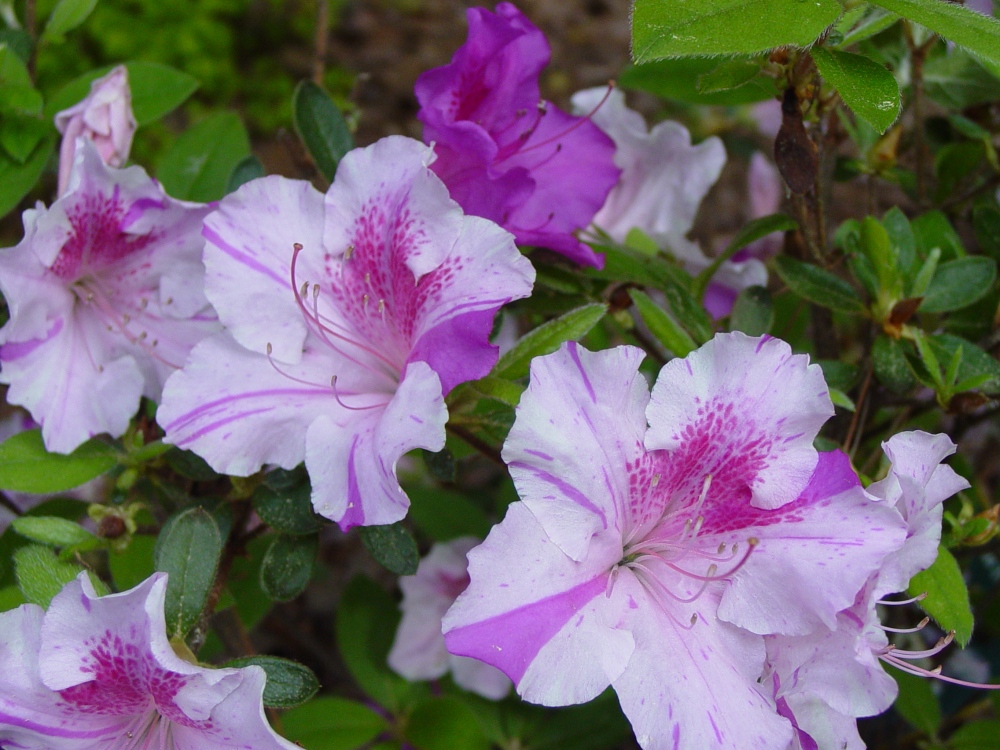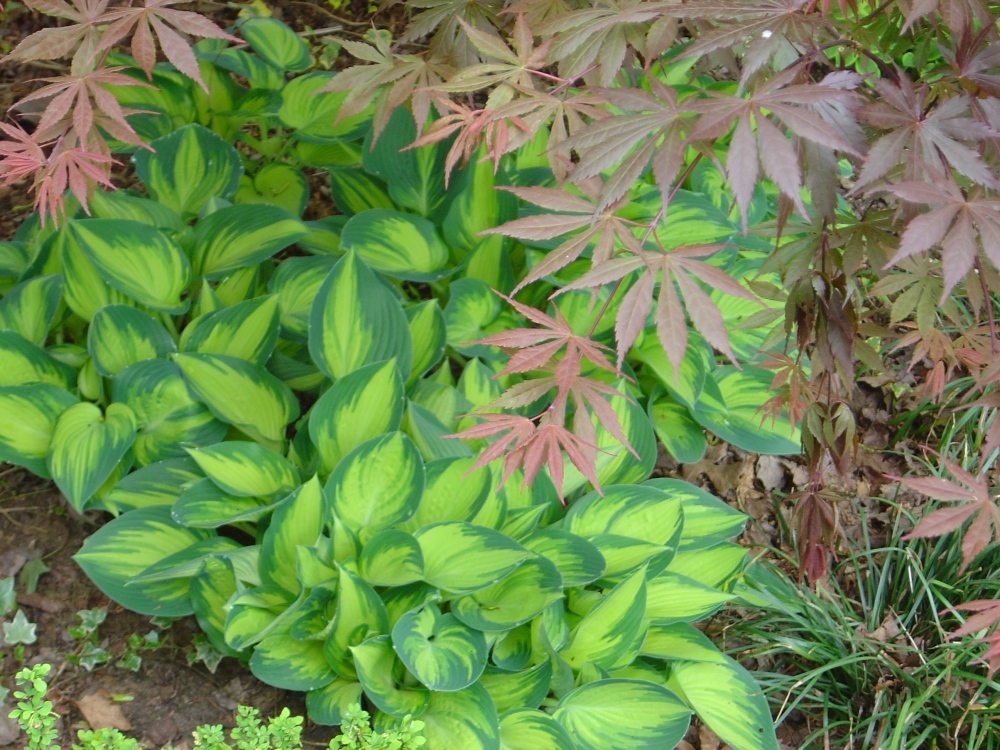Everything you plant dies? You think you have a brown thumb? I’m sorry, there’s no such thing. Anyone can grow plants, even you!
In nearly four decades in the landscape business, and longer as a gardener, I’ve been amazed and confounded by the complexity that people attribute to the simple act of selecting and planting their garden plants successfully. Today, I hope to break the process down into easy to digest pieces.
Select the right plant for the area
Read the plant tag, the sign in the garden center, or the description in the catalog. If the sign recommends shade to part shade, don’t plant in full sun, and vice versa. Many plants are tolerant of a range of conditions, others are not, and you’ll only find out through experience, so it’s better if you keep it simple and follow directions. Rather than attempting to coordinate sun or shade exposure requirements with mature plant sizes, ask the garden center manager, or better yet, contact a landscape designer.

Beyond taking measure of whether you will be planting in sun or shade, there are some conditions that are very limiting. If you plant in these without getting the right information, your plants will fail.
Drainage problems
If the area you’re planting in stays wet, most plants will not survive. This has nothing to do with a brown thumb, but a lack of available oxygen and ultimately root rot. There are plenty of plants that will thrive in wet conditions, but if you try to force one that doesn’t into a wet spot, it will die, usually quickly. Weeping willows, bald cypress, and red maples are among trees that will tolerate wet feet, even standing water, and there are evergreens and perennials that are similarly well suited to damp areas. Your choices are limited, so research or get advice before you plant just anything in a swamp.

Dry shade
Shallow roots of shade trees, usually maples, are frequent contributors to the death of young plants. Lack of water is truly the cause, but the culprit is the root system of an established tree that efficiently grabs every ounce of moisture, whether supplied by your hose or irrigation system, or by rainfall. If the area is too shady for grass to survive, then part of the problem is usually shallow tree roots, and you’re limited in the plants that will survive this competition. Digging a bigger hole won’t help. The tree’s roots will soon invade the fresh soil, and building up soil over roots can work temporarily until the roots grow up into the new soil, but can harm some trees that won’t tolerate decreased root zone oxygen levels.

How to dig a hole
The most common cause of death that I’ve witnessed over the years is killing plants with kindness, digging too large a planting hole, in particular too deep a hole. Until recently, common practice was to dig twice the width and depth of the root mass of the plant. Inevitably, the base of the plant will settle in the loose soil and roots will be starved for oxygen, and either be too dry because they are below the damp surface soil, or too wet in poorly drained clay soils. There’s no reason to make this any more complicated, follow one simple rule and your chances for a successful planting will multiply. Do not dig a hole deeper than the depth of the roots. In fact, it’s better to err by planting slightly high, especially in poorly drained soils (clay).
Plants need water
Not too much, as discussed earlier, but plants need water to survive, and the first several weeks after planting are critical. Let a three day old perennial dry out in June and you’ve lost a plant. Two months later there’s a longer margin for error, and two years later, even greater.

“But I watered twice a week”, or “three times”, or “just like I was told”. All are famous last words, lamenting a dead plant. There are two obvious possibilities here, one that the person did not water as frequently as they claim, or that they did not water properly. No matter the frequency of irrigation, if the water flows off into the lawn, or into the storm drains, then it has done little good for the plant.
In all cases the key to efficient watering is to do it slowly. Standing over a plant with a hose running full blast wets the soil surface, at best. The best irrigation practices involve drip irrigation, soaker hoses, and low flow watering aids such as GatorBags. How long? How much water? These cannot be answered without knowing the type and size of the plant, the soil type, and moisture content of the soil, but we want to water deeply and less frequently.
Don’t give up on a plant too soon!
Plants are tougher than you expect. We can starve, flood, neglect, and abuse them, and still they live. Sometimes not without some outward signs of stress. Too often a living plant is given up for dead when there are a few brown leaves. Even when the entire plant turns brown there is often enough vigor remaining that the plant will send out new growth.
Scratch the bark, and if there’s live, green tissue don’t give up on the plant. Continue to water, do not fertilize, and wait. Often the leaves that emerge will be smaller than normal, but the plant is alive, and with a little extra attention to watering it is likely to survive.
Don’t worry about the soil
Plants will survive in clay, sand, gravel, and just about any conditions found in a garden. Some soil types will need some work so that they retain or drain water more efficiently, but in all cases the entire planting bed should be amended, not just the planting hole. Too often I hear that someone has dug a hole, removed all the existing clay soil, and replaced it with rich topsoil. Then they wonder why the plant has died. An impervious soil (clay) with a hole dug and filled with rich organic soil without allowance for drainage sounds much like a bog, and not a suitable environment for most plants.
The ideal soil for most plants contains only 5-10% organic content, far less than the soils of many gardeners who dump endless supplies of compost into planting beds. This small amount of organic content provides an excellent soil structure with ideal spaces between soil particles to hold moisture without becoming waterlogged. Plants will survive, and often thrive, with soils that have been over improved, and others that have had no amendment at all.

My advice to gardeners with clay soils is to take a lesson from vegetable growers and plant in raised beds. I have found that the most critical issue in planting in clay is drainage, and there’s no practical way to alleviate the drainage issues of clay without considerable expense, so build up the planting bed to plant several inches above the compacted clay. The best soil to use in raised planting beds? Again, not rich, highly organic soil, but a mix heavy on clay with some organic content added to improve drainage.
Keys to successful planting
- Pick the right plant for the conditions
- Dig the hole for the plant so that the base is slightly above ground level. It’s okay to dig wider, but don’t dig any deeper than the depth of the container or rootball.
- Water after planting, slow and deep. A couple times each week during the growing season for the first four to six weeks. Mulch will help retain ground moisture, but don’t allow mulch or soil to build up against the plants trunk or lower branches.
- Watch it grow! Don’t fiddle with it, or fertilize, just enjoy. There’s more potential harm in doing too much than too little, with the possible exception of watering.